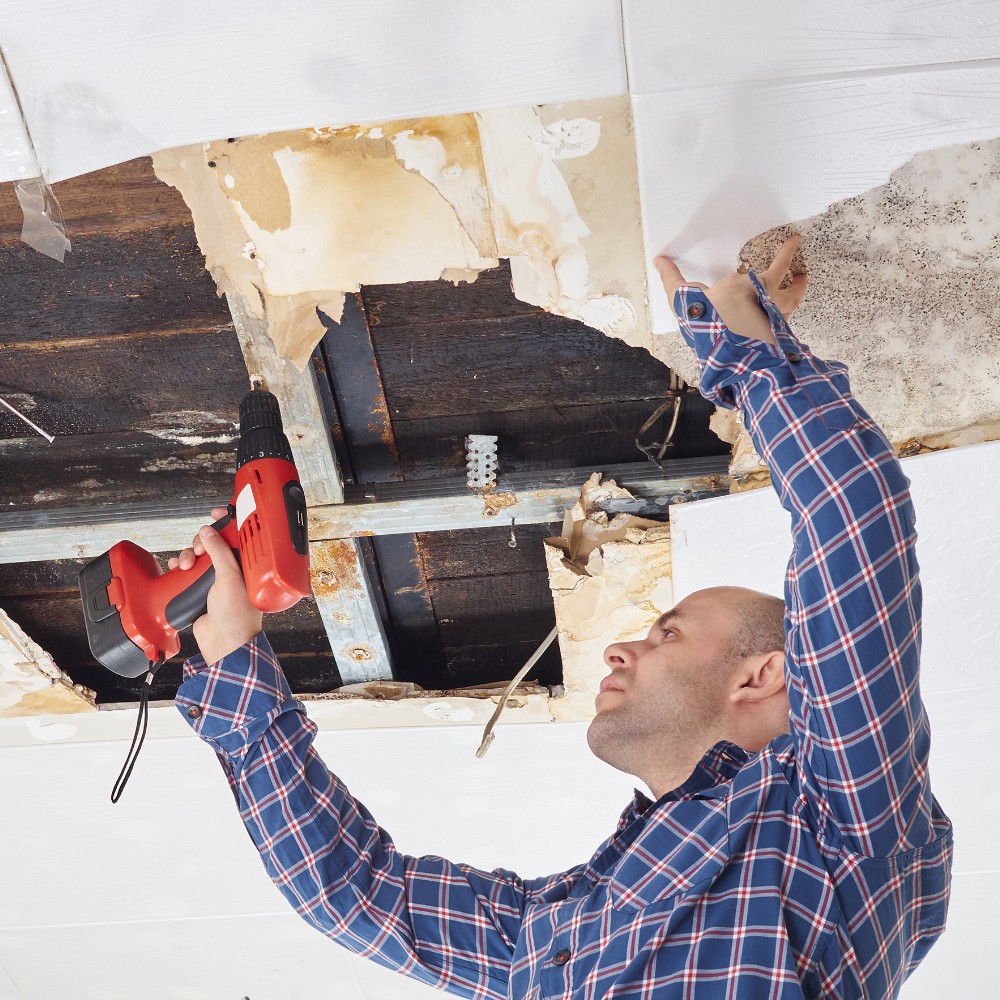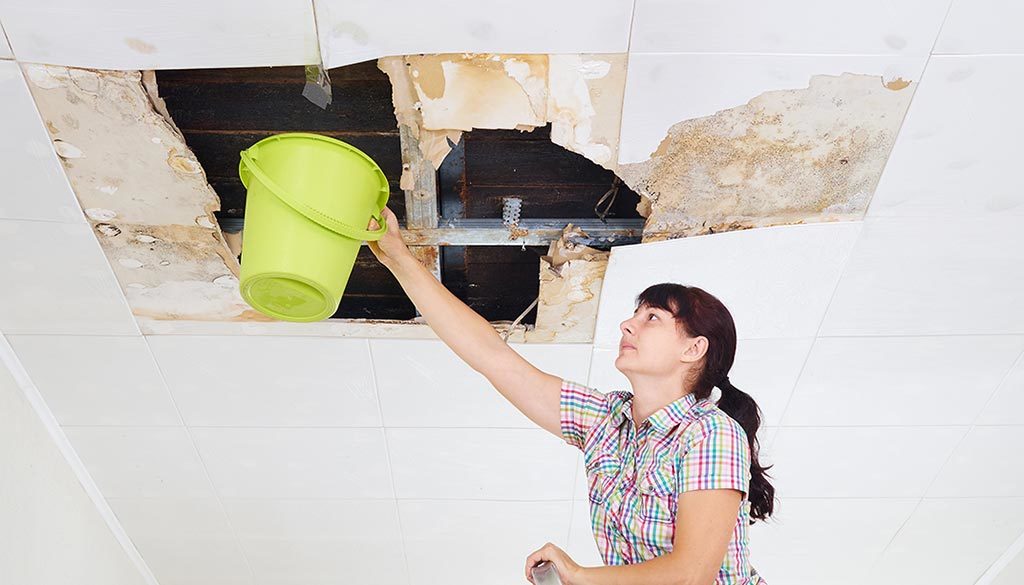Understanding Health Hazards Related to Delayed Water Damage Restoration St George UT
Necessary Steps to Adhere To for Efficient Water Damage Repair in your house
When confronted with water damage in your house, knowing the essential actions for effective repair can make all the difference. You need to analyze the damage and assurance safety and security prior to dealing with the problem. Stopping the source of water is important, but it's just the beginning. There's a collection of activities you should take to secure your property from further concerns once you have actually taken care of that. Allow's discover what you must do next.
Analyze the Damage
When you discover water damages in your home, the primary step is to assess the damages thoroughly. Beginning by determining the source of the water breach. Examine for leaks, ruptured pipelines, or other problems causing the issue. Next, check out the influenced locations for visible signs of damage, consisting of bending, mold and mildew, or discoloration development. Don't fail to remember to search in concealed places like behind wall surfaces or under flooring, as water can permeate into these areas unnoticed.Document the damage by taking clear images and notes. When going over the situation with your insurance coverage provider or remediation specialists, this will help you. Take notice of the kind of products influenced, as various products call for different remediation methods. Evaluate the degree of the damages. Is it considerable or minor? Understanding the scope will certainly lead you in making a decision whether to manage it yourself or call in the specialists for a much more extensive reconstruction process.

Guarantee Safety
Prior to you start any repair job, guaranteeing your security is important. First, evaluate the condition of your home. If the water's deep or if you see electric dangers, don't get in the location. Transform off the electrical energy and gas supply to stop accidents. Use protective equipment like masks, gloves, and boots to secure yourself from pollutants or mold.It's crucial to remain knowledgeable about your surroundings; look for sharp objects and unsafe surfaces. If the water is from a sewage backup, treat it as contaminated materials. Maintain children and animals away from influenced locations to avoid exposure.Once you have actually taken these precautions, you can continue with the restoration process. Keep in mind, your safety comes first, and if you're ever before unclear, it's ideal to get in touch with a specialist. Taking these steps will aid assure you prepare to tackle the repair securely and effectively.
Quit the Source of Water
After ensuring your security, the next action is to quit the resource of water. Recognize where the leak is coming from. It can be a burst pipeline, a malfunctioning home appliance, and even hefty rainwater entering with a harmed roof covering. If it's a pipes issue, transform off the main supply of water to your home to avoid further flooding. For devices, unplug them and turn off their water valves.If the source is outdoors, like rainwater, try to divert it away from your home making use of sandbags or other barriers. For small leakages, you could be able to use tape or a sealant briefly until an expert can repair it. Bear in mind, addressing the source promptly is crucial to reducing damage and protecting against mold and mildew growth. When you have actually quit the water, you'll be in a better setting to move on to the next steps in the remediation procedure.

Get Rid Of Excess Water
Act swiftly to remove excess water, as standing water can cause much more extensive damages and mold growth. Initially, gather your tools: a wet/dry vacuum cleaner, buckets, and towels. If the water is shallow, you can utilize towels to absorb the moisture. For deeper water, a wet/dry vacuum cleaner is your best choice. Make certain to empty the vacuum often to avoid overflow.If the water is infected, like from a sewage backup, wear safety equipment, including handwear covers and masks, to keep yourself risk-free. Once you have actually eliminated as much water as feasible, look for surprise pockets of moisture in corners and under furnishings, as these can nurture mold.Don' t neglect to switch off electrical home appliances and power electrical outlets in damp locations to stop risks. This preliminary action is important in lessening damage and establishing the phase for a successful reconstruction process.
Dry and Dehumidify the Area
Once you've gotten rid of the excess water, it's important to dry and evaporate the location completely. Beginning by utilizing dehumidifiers successfully to draw moisture out of the air and stop mold and mildew development. Keep an eye on humidity levels to guarantee the room dries completely.
Remove Standing Water
To successfully deal with water damages, you need to concentrate on eliminating standing water as swiftly as feasible. Begin by collecting essential tools, like a wet/dry vacuum or a pump, depending upon the volume of water. If the water is shallow, a vacuum should suffice. For bigger quantities, a pump is a lot more effective. While working, see to it to put on safety equipment to keep on your own secure from pollutants. As you get rid of the water, take note of hidden locations like under furniture or in edges where water may collect. As soon as you have actually removed the majority, your room will certainly start to dry out. This step is vital, as sticking around water can cause mold growth and more substantial damage.
Use Dehumidifiers Properly
Exactly how can you efficiently use dehumidifiers to dry and evaporate your area? Start by positioning your dehumidifier in one of the most afflicted area, preferably where water damage is most extreme. Ensure to close all home windows and doors to develop a covered atmosphere. Switch on the dehumidifier and set it to the proper humidity level, normally around 30-50%. Vacant the water collection storage tank often, or think about utilizing a model with a continuous drain option for benefit. If feasible, utilize followers to enhance airflow, assisting the dehumidifier work a lot here more effectively. Maintain the dehumidifier running till you're confident that the location is thoroughly dried, avoiding mold and mildew development and extra damages (Water Damage Restoration St George UT). This step is important for efficient water damages reconstruction
Monitor Moisture Levels
Surveillance humidity degrees is crucial throughout the drying out process, as it assists ensure your room continues to be totally free from excess moisture. Spend in a reputable hygrometer to track moisture properly. Preferably, you wish to preserve degrees between 30% and 50%. If humidity analyses climb over this range, you may require to adjust your fans or dehumidifiers to enhance air flow. Inspect the readings routinely, particularly in locations prone to wetness, like washrooms or cellars. Think about enhancing ventilation or making use of additional dehumidifiers if you discover relentless high moisture. Remaining on top of these levels not just quickens the drying process however also prevents mold development, guaranteeing your home keeps comfy and secure.
Tidy and Disinfect Affected Surfaces

Recover and Repair Your Home
After cleansing and sanitizing the impacted locations, it's time to restore and repair your home. Begin by reviewing the damage. Look for structural problems, like compromised floors or wall surfaces, and address any essential repairs. Replacing damaged drywall or flooring is vital for both aesthetics and safety.If your furnishings or valuables were influenced, think about whether they can be recovered or need substitute. Tidy or properly restore products where possible.Next, touch and paint walls up any type of locations that need attention. This not only boosts look but also shields surface areas from future water damage.Don' t fail to remember to inspect your plumbing and appliances for leaks, making certain whatever's working appropriately. Consider setting up a dehumidifier to prevent future dampness issues. By taking these actions, you'll restore your home to its previous magnificence and produce a more secure living atmosphere.
Regularly Asked Concerns
The Length Of Time Does Water Damages Restoration Usually Take?
Water damages remediation commonly takes anywhere from a couple of days to several weeks, relying on the degree of the damage (Flood Damage Restoration). You'll intend to evaluate the circumstance swiftly to minimize additional complications and assure appropriate reconstruction
Will My Insurance Coverage Cover Water Damage Repair Prices?
Your insurance could cover water damages repair costs, but it depends upon your plan. Check your coverage information and call your insurance agent to clarify what's consisted of and what you require to sue.
Can I Deal With Water Damages Reconstruction Myself?
You can manage water damages repair yourself, yet it's essential to assess the scenario. You could desire to call professionals if it's extensive. Always prioritize security and guarantee you've got the right devices.
What Are the Indicators of Hidden Water Damage?
You might notice signs of hidden water damages like warped wall surfaces, mildewy smells, or discoloration. If your floorings feel spongy or you spot mold, it's time to check out further before the scenario worsens.
Just How Can I Protect Against Future Water Damage in My Home?
To avoid future water damages in your home, you must on a regular basis inspect pipes, seal splits, preserve rain gutters, and warranty proper drain. Installing a sump pump and wetness obstacles can likewise help keep your area completely dry. When you find water damages in your home, the first step is to examine the damages completely. Act quickly to get rid of excess water, as standing water can lead to a lot more substantial damage and mold development. To efficiently deal with water damage, you need to focus on removing standing water as promptly as possible. As you get rid of the water, pay focus to hidden areas like under furniture or in edges where water may accumulate. Water damages reconstruction commonly takes anywhere from a few days to a number of weeks, depending on the extent of the damage.